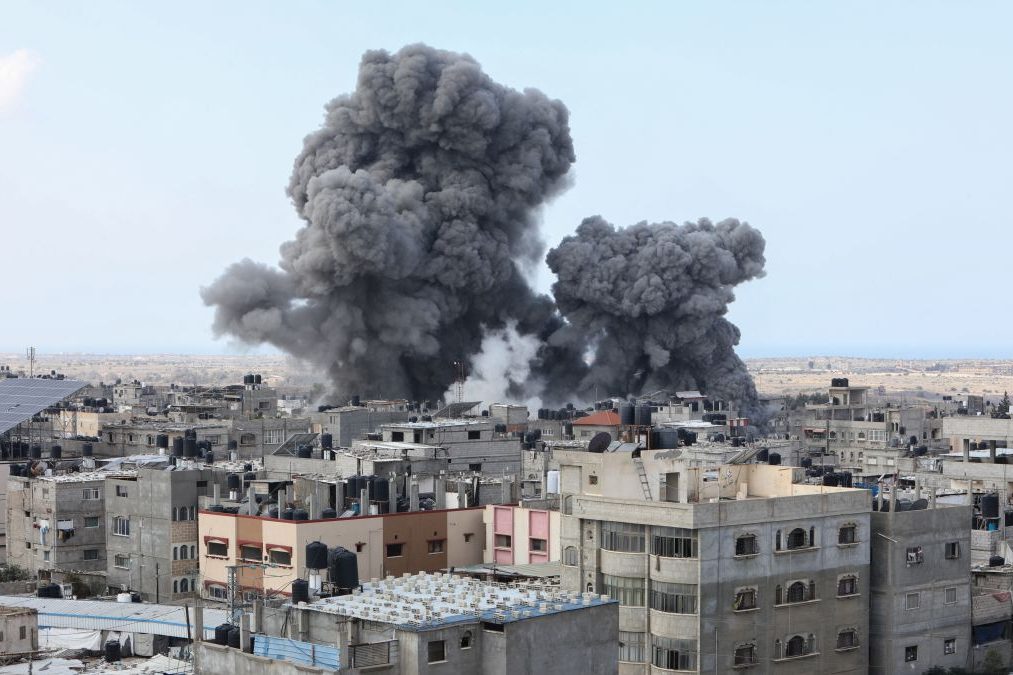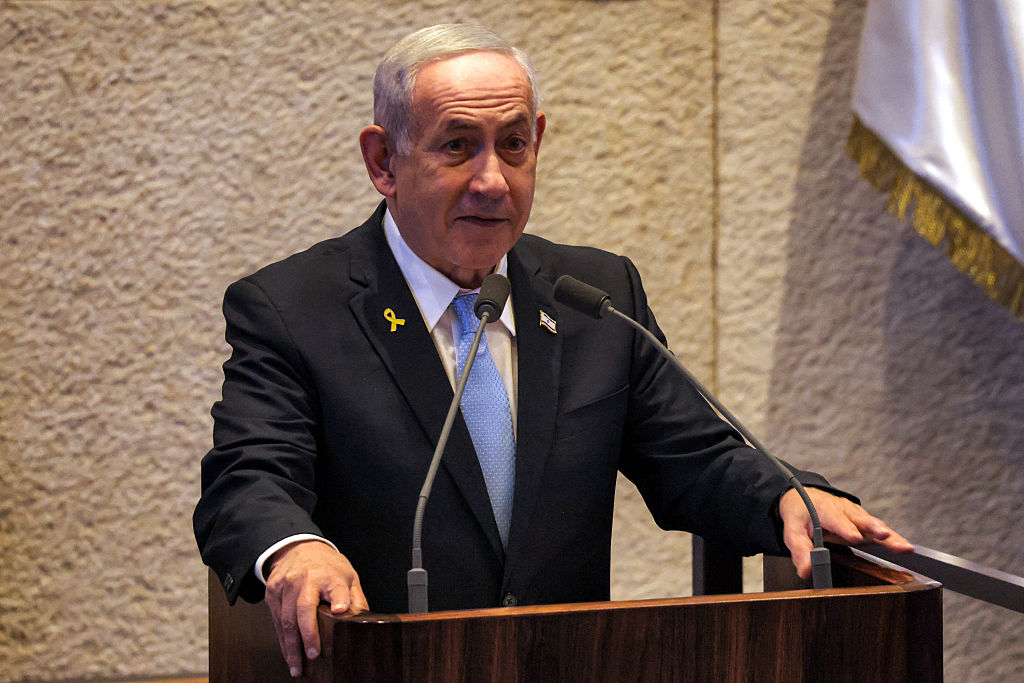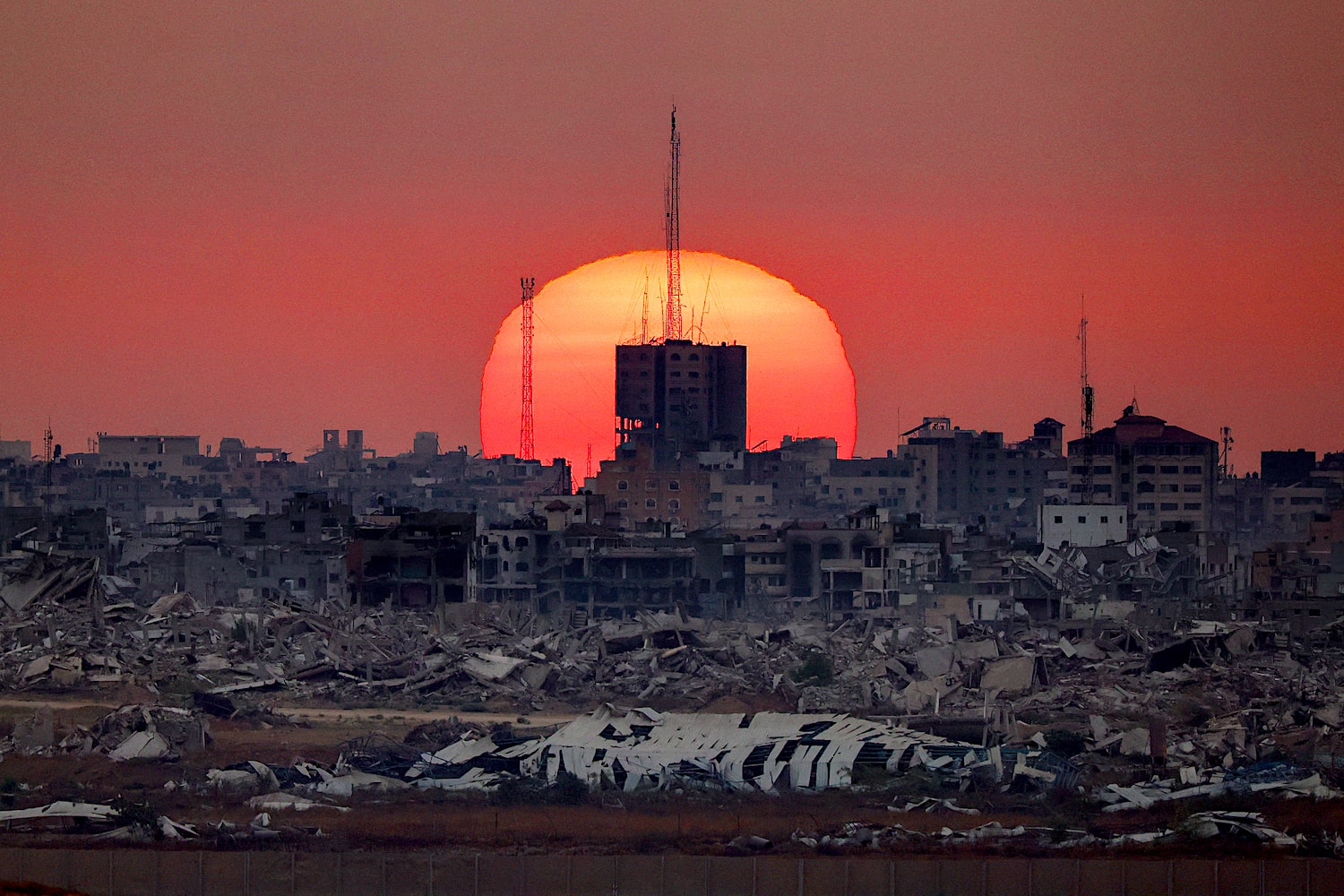Israel is likely to need every one of the 300,000 soldiers it is amassing on the border with Gaza if, as now seems likely, Prime Minister Benjamin Netanyahu orders a full-scale invasion of the Palestinian enclave.
The first signs of an imminent attack are so-called shaping operations — punitive strikes in a bid to test the water and see how the enemy responds. These are already happening in the form of airstrikes against Hamas’s headquarters, strong points and ammunition dumps.
The cost to Israel will be high in both blood and treasure
At the same time, senior Israeli commanders will currently be stockpiling masses of ammunition, missiles and rockets — along with rations, water and medical equipment to deal with the scores of wounded troops in the coming months of fighting.
It is possible that Prime Minister Netanyahu may offer the 2 million residents of Gaza a safe route out of the area, with the warning that those who remain will be regarded as combatants. Where residents will go, however, is another matter.
On paper, a war between Hamas and the IDF is an epic mismatch. The Israeli military is vastly better trained and equipped. It has a huge technological advantage over Hamas and can wage war both day and night in close combat and at long range.
The IDF is bristling with tanks, state-of-the-art weaponry, combat jets, attack helicopters and sensors and satellites, which can pinpoint the location of a single armed terrorist.
But as the wars in Iraq and Afghanistan have shown, this advantage is no guarantee of success. The difference, of course, is that the war against Hamas is now much more personal for the Israelis than the war against the Taliban and Saddam Hussein was for most of us in the West.
A ground assault on Gaza in some form now seems inevitable. Prime Minister Prime Netanyahu has declared: “What we will do to our enemies in the coming days will reverberate for generations,” and his defense minister Yoav Gallant has added: “We are fighting human animals – and we act accordingly.”
Once H-hour — the time at which all military operations begin — is reached, the key tactic is likely to be overwhelming force from the air, land and sea.
Israeli commanders will most likely divide the Gaza strip up into sectors, attacking each area with a huge concentration of force simultaneously in the hope of surprising and causing confusion amongst the terrorists.
Each combat unit will have its own pre-planned objective, such as seizing a building or clearing a specific neighbourhood. The IDF will hope to isolate Hamas units and destroy them as quickly as possible.
But the cost to Israel will be high in both blood and treasure.
Urban warfare, or Operations in a Built-Up Area (OBUA) as the military like to call it, is always a bloody business and, as most experienced combat commanders will claim, is best avoided at all costs.
The Prussian general Carl von Clausewitz observed in the nineteenth century that “everything is very simple in war, but the simplest thing is difficult” and street fighting is the most obvious example of this.
The initiative nearly always lies with the defender and Hamas will be ready. Gaza is after all their territory. They will know every side street and alleyway, the location of the best ambush sites and where highly sophisticated improvised explosive devices can do their most damage.
The Israeli infantry will bear the brunt of Hamas attacks as troops warily enter bomb damaged streets and neighborhoods, checking the skyline for snipers while at the same time looking for mines and trip wires.
Every room in every building will have to be checked and cleared and possibly fought for, with the Israelis knowing that at the last moment the fanatical Hamas defenders may detonate explosives in a final bloody flourish.
Tanks are no use in an urban arena. Armored vehicles are slow and cumbersome and vulnerable to attack and the vibrations they create as they trundle along bomb-damaged streets can cause buildings to collapse, adding to the chaos and confusion.
At the same time the IDF may also face attacks and incursions on its northern border from the Iranian-backed terrorist group Hezbollah, as well as unrest in the West Bank.
Then there is the tricky issue of attempting to define what victory might look like and how the crucial end game of the operation might evolve. Is the plan, for example, to kill all 40,000 Hamas terrorists in Gaza?
The Israeli generals advising Netanyahu will, of course, know all of this and will no doubt attempt to heed the words of Sir Alex Younger, the former head of Britain’s Secret Intelligence, who suggested that the Israelis should box clever and be wary of walking into the trap Hamas had set for them. “Killing terrorists only creates more terrorists,” he warned.
Israel has been left traumatized by the events of the past week and it is easy to see why there are demands for vengeance. It is no exaggeration to equate the Hamas attacks with those of 9/11 — proportionately Israel had lost many more of its citizens that were killed in New York, Pennsylvania and Washington on that fateful day.
But what Israel does next will define its course for a generation. Perhaps the only solution is all-out war against Hamas. As Clausewitz also said: “There is only one decisive victory: the last.”
This article was originally published on The Spectator’s UK website.

























